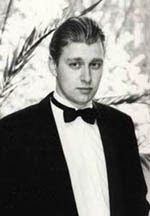 | |
|
The taxonomy of mudras and godforms (postures) within this work is not only very revealing from a cultural-historical viewpoint but also applicable to the mystic: merely try to focus some 'qi' or mental or emotional energies in any given situation of your life through these channels and see what they will effect for yourself! It is great fun indeed. There is also an equally recommendable corresponding work on Buddhist iconography to be found here.


5 Kommentare:
'applicable to the mystic'...? Sure you don't mean 'magician'?
Fark, youre crazy!
anon1: Absoluetly! In fact that's exactly what I mean: magician, magickian, sorcerer, witch, psychonaut- what have you- but 'mystic' sounds more convincing to the uninitiated; maybe even better: philosopher or student of applied metaphysics/or theology.
anon2: Iä Iä R'lyeh, Cthulhu ftagn..
Although I understand your point about imitating the postures and hand-gestures of these godforms, I'd still wonder how you would proceed if a deity, as often happens in Hinduism, is depicted with multiple arms?
In that case those extra sets of limbs would refer you explicitly to the next level: i.e. your so called multi-formed body of light. For a beginner it could be said that those additional arms would need to be energetically 'imagined' as being extant alongside your physical body, and you'd perform the prevalent 'katas'/forms on all those levels simultaneously...
Thanks, that actually was a pretty good question!
Kommentar veröffentlichen